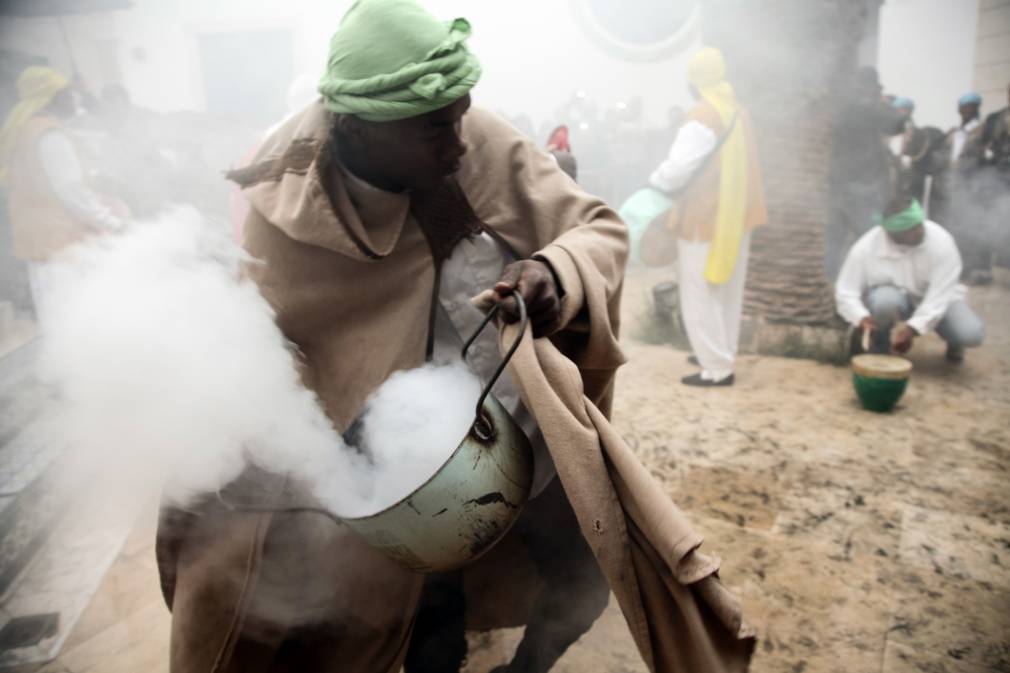Stombali, stambali or stambeli… The origin of the word is multiple and imprecise. Some suggest a reference to “Istanbul” – in Arabic, stambeli means “who comes from Istanbul” – while others think that the term derives from “stambeli”, which describes an ensemble of possession rituals among certain Nilo-Saharan peoples, such as the Songhai: “we can safely say that the stambeli is a cult, or more precisely a type of African rite, modified yet embraced by Islam,” explains Amine Metani. A musician and founder of the electronic trance label Shouka, Amine – much like Tunisian producer Ghoula and artists of the Arabstazy collective – draws largely on influences within this sound shrouded by secrecy.
“The stambeli perpetuates the worship of Muslim saints and spirits of Sub-Saharan Africa, like the Bori cult, celebrated among the Hausa people.” United by a singular belief, these two worlds thus make up a complex biotope of sacred entities called the mlouks: “these are pre-Islamic figures, continues Amine. They form a very elaborate pantheon, different from the world of jinns recognized by the Koran for example.” Sexed, and at times with their offspring by their side, the spirits of the stambeli are African and mainly Muslim, although some are described as being Christian.
Sub-Saharan roots and healing trances
Proliferated by spice traders in the 18th and 19th centuries, the stambeli finds its roots in Sub-Saharan Africa, among the Hausa peoples, but also among the Kanuris, further east. “Imported” to Tunisia by merchants, musicians as well as slaves kidnapped by Arabs to be sold in the souks, this ritual, initially born in the melting pot of cultures within Black Africa, would then begin to mix with local Islam.
“One can interpret the stambeli as an echo, a resonance, a space of spiritual convergence between the descendants of enslaved Sub-Saharan Africans and the North African peoples,” explains Amine. The history of this cult is documented orally, musically and through dance. In the stambeli, nothing is ever written down. With this loose historical foundation, we are able to see connections between the Tunisian rites and that of Morocco’s Gnaouas; the diwan in Algeria; Haitian voodoo; “and even the very distant Brazilian candomblé, a syncretic religion formed through mixing of the Yoruba, Fon or Bantu cults, adds Amine. Everything happens through word of mouth: the transmission of the arifas’ knowledge, as well as consultation from fortune-tellers and priestesses in revealing the origins of evil.” There’s no doubt that stambeli is about an African rite, much more than a practice stemming from one of the main “religions of the Book”.
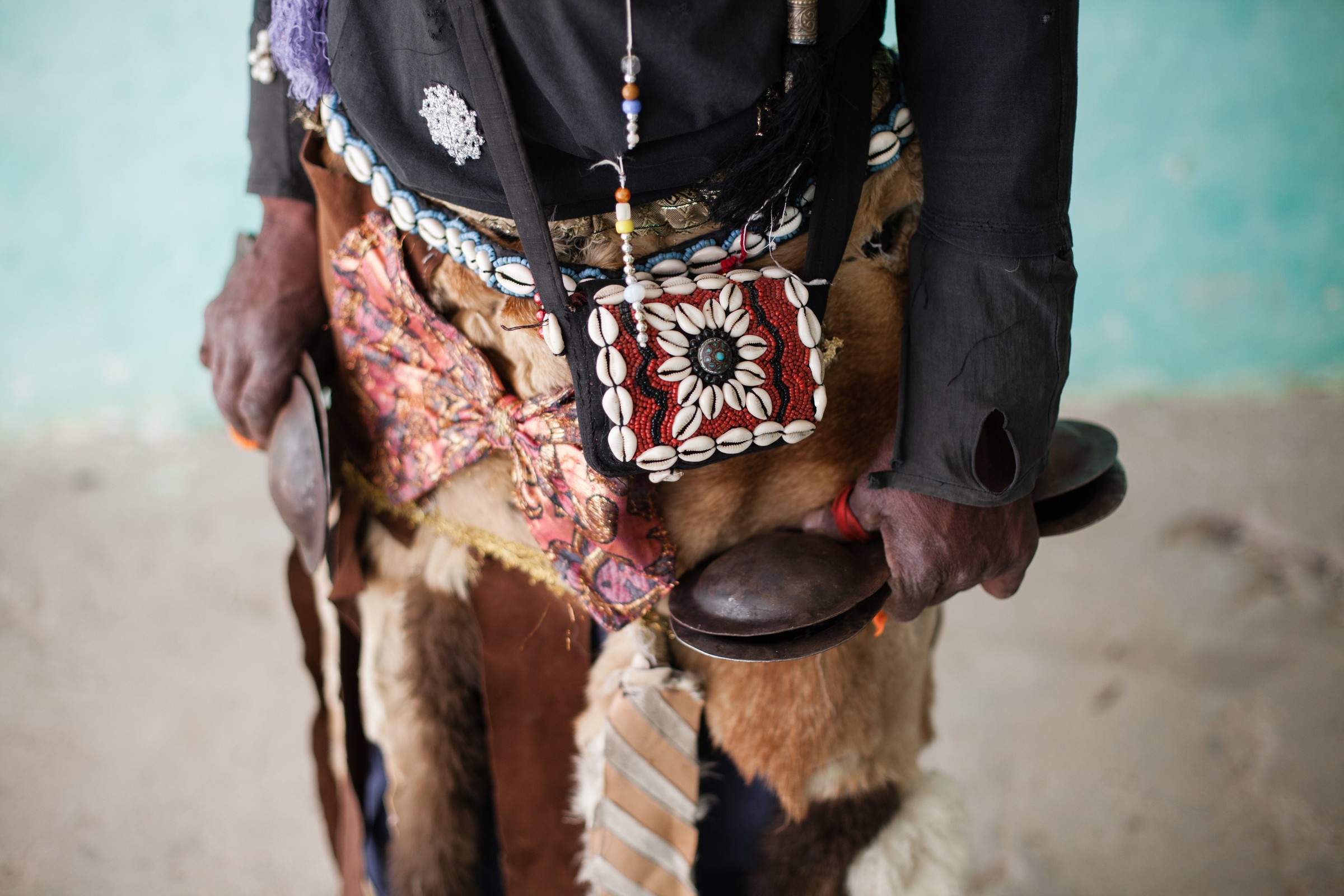
If you are new to the possession game, just think of stambeli as a therapeutic ritual: quite the opposite of the process taking place in the movie The Exorcist, whose goal is to expel an evil entity from the human body. In the stambeli, music is played to draw a spirit into a human host, in order to please them. Once the spirit takes possession of the host, musical loops play late into night, when the spirit is eventually appeased: “unlike exorcism, the idea here is to invoke the spirits, coaxing them with a trance-dance as a form of offering.” This is known as “adorcism”. They who lend their body to the spirits so to satisfy them, find themselves healed and regenerated.
The medium in charge of this delicate dialogue between the patient and the spirits is called “the arifa”. Guiding the ritual, they form a diagnosis, and choose the spirit to be appeased. Riadh Ezzawech, one of the last Arifas in Tunisia communicates with around forty different spirits. He usually solicits twenty main ones during private or public ceremonies. Each follower can thus benefit from their individual services.
Another cornerstone of the ceremony: the music, is conducted by the mâllem. Also known as Yenna, this master holds position at the center of the orchestra. Their signature instrument is the gombri, a three-stringed lute whose long neck allows for communication with the spirits: “This instrument played by the master of ceremonies has the power to attract the spirits who upon listening to it, descend among the believers. The sound of the Tunisian gombri is very recognizable, comments Amine Mettani. It consists of the plucking of three strings, accompanied by percussive beats on the resonance chamber, over which a skin is stretched, and vibrations from a metallic resonator. The Yenna is accompanied by chkachek players, placed on either side of the master.” The chkachek are small metallic percussion instruments played in cyclical structures made up of heady loops that can be found in the Algerian gnaoua or diwan too. To experience the bewitching sonic layers that make up the stambeli, listen to the two releases that the Shouka label dedicated to the genre – two sessions recorded respectively in Tunis and in Sidi Ali El Mekki.
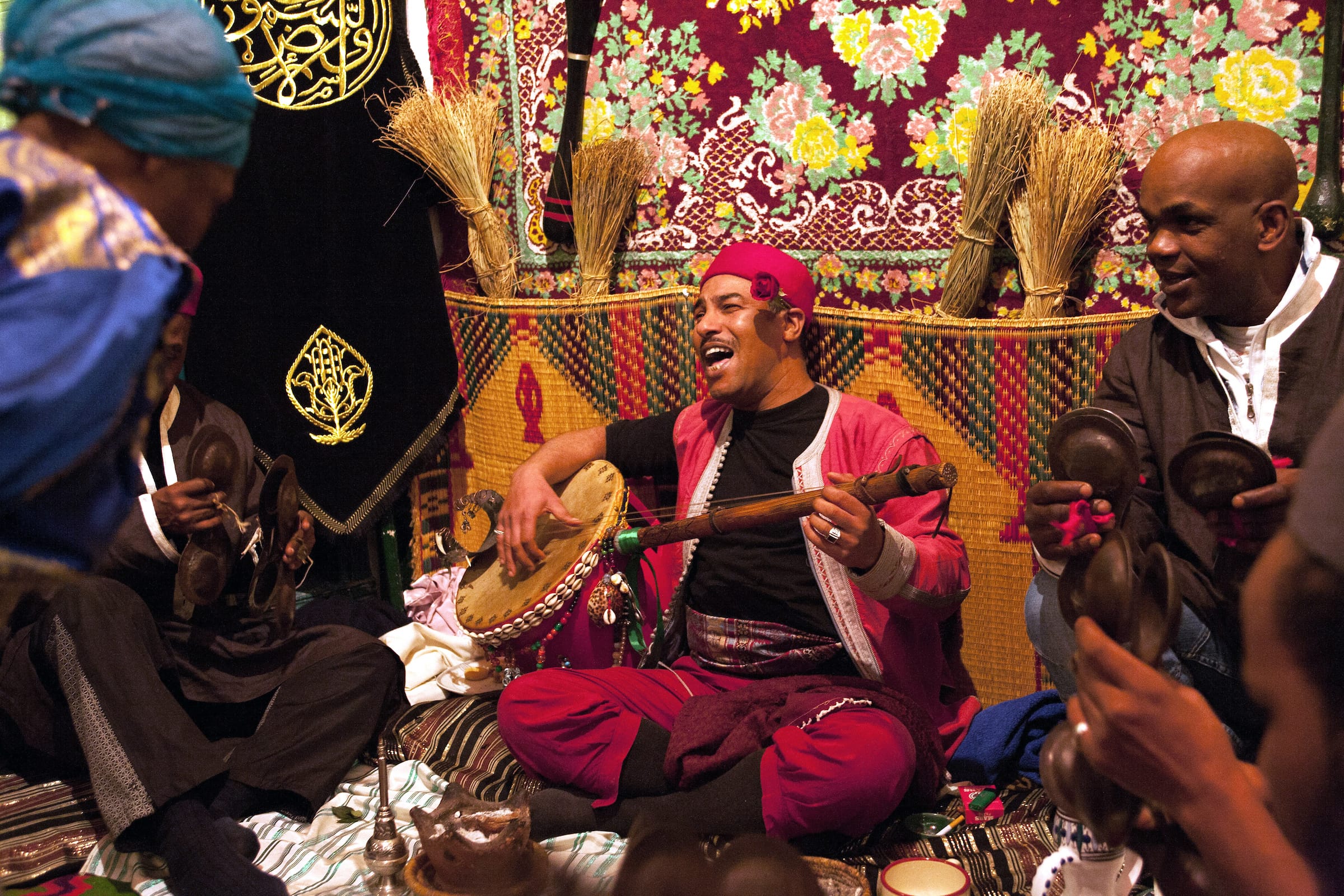
The stambeli: an endangered ritual?
In a ritual that includes incantations, musical sequences, mastery of instruments and sacrificial rites, the initiation of the mâllem and the arifas is fundamental. But first they need to have inherited this status from their ascendants. And that is the key issue here: in Tunis, the stambeli houses have been disappearing for lack of new masters. Only a handful of mâllem still practice in the capital city. A privileged observer of the ritual, photojournalist Augustin Le Gall has been at the heart of stambeli ceremonies for the past ten years: “officially there are three mâllem left, but two young people have been taking up the torch. So that would make it five of them to my knowledge. Musical education is passed down from family to family, but some gifted individuals are able to initiate themselves and learn to become a master.”
Likewise, among the arifas, the sharing of knowledge takes place within the family circle. Or occasionally but more rarely, by the election of the “spirits”. This was the case with Riadh Ezzawech, one of the last arifas in Tunisia, who practices the traditional ritual for a continuing audience: “Riadh does not come from the stambeli, Augustin told us. He was chosen by the spirits to represent them. As a teenager, he fell sick and was then taken care of and initiated by the last arifas. In stambeli, sickness is a sign that the spirits wish to interact with the human world.”
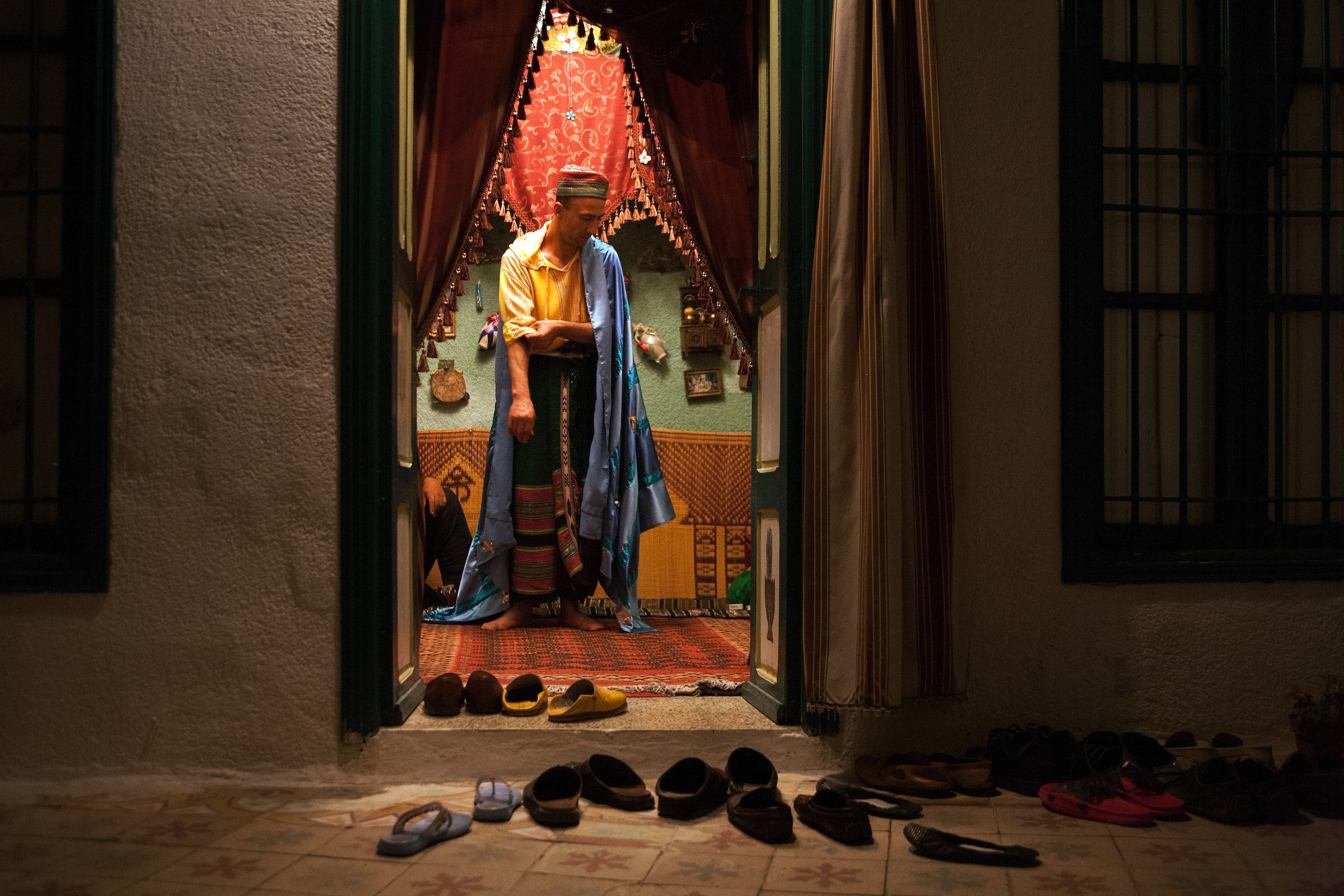
According to the photojournalist, only two actual practicing arifas remain to this day: “Riadh has been the most in demand and the most active, adds Augustin Le Gall. It is through his body and his powers that the spirits are able to speak to humans. Faced against the deaths of former arifas and confronted with the disillusionment of the contemporary world and its associated desacralization, but also with the lack of interest from institutions, the ritual has unfortunately been disappearing, little by little.”
In the south of the country, the dynamic is different, especially in Nefta as well as within the Tozeur-based Banga community, where the transmission of the process has continued to be passed down towards the younger generation. But generally speaking, at a local level, many participants of the traditional stambeli ritual still feel that their culture is in danger of disappearing. Unlike in Morocco for example, where the youth, cultural institutions and tourism agencies have largely embraced the Gnaoua heritage. The stambeli however, has not yet found its audience in Tunisia.
Initially protected by the Beys regime [in the 18th and 19th centuries; editor’s note], the genre was then scrutinised under Prime Minister Bourguiba* who, in order to build national union – famously known as “Tunisianess” –, did not hesitate to annihilate the interests of specific communities. In Tunisia, for several decades, tribal diversity and regional customs – in short, the habits and customs of many minorities – have been severely scaled down.
In the wake of the country’s independence, ritual practices were banned and many of the shrines where religious friaries met were shut down. The stambeli would survive, yet discreetly, behind closed doors – literally, from their homes. This development, combined with the actions confined within the private sphere – especially in the north of the country – have largely alienated this ritual from the Tunisian people.
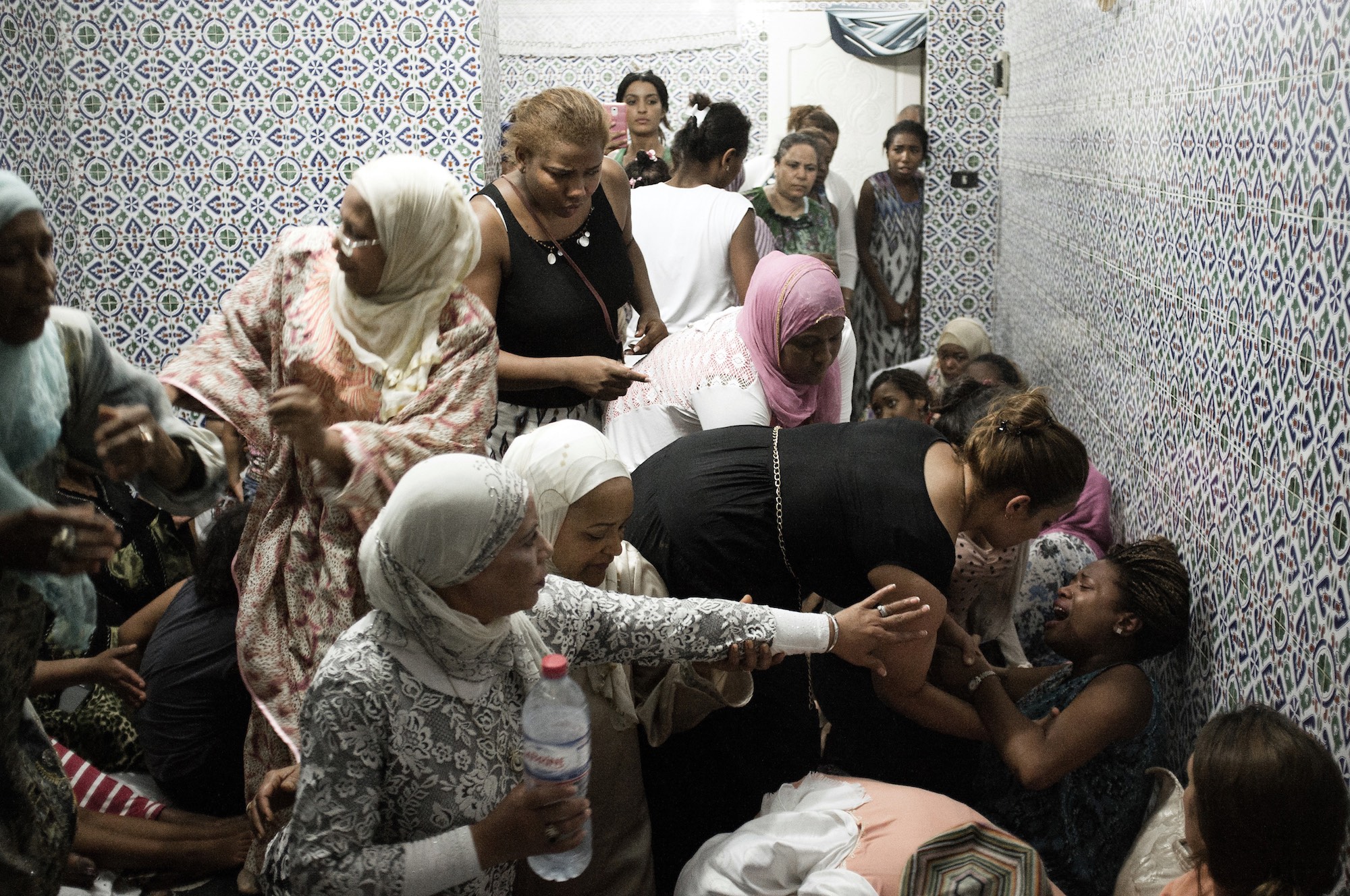
Reconnecting with spirits
Today, it is the French noise music scene – for example with guitarist François Cambuzat and his band Ifriqiyya Électrique – or the young Tunisian musical guard, who have been dusting off the cobwebs from this music. Indeed, the rhythmic foundations of the stambeli merge effortlessly with electronic compositions to the point that, in their quest for states of trance, contemporary dance floors have danced to the sound of these healing and spiritual loops – without even knowing it. These are the same patterns as the ones used by artists of Tunisian ascendance interested in trance, like Deena Abdelwahed; the Arabstazy collective; but also certain artists from the Shouka label, including Ghoula – the female term for “monster” in Arabic [that translates as the English term “ghoul”; translator’s note], who has just released “Bambara”. A track composed around a sample of the late Abdel Majid Mihoub’s voice, one of the great gombri players of Tunis.
After many long years of institutional transition – several of which were dominated by the weight of the Islamist party/movement Ennahdha in parliament – is this small country now ready to defend its own identity: Arab, Mediterranean of course, but also African, while opening up the ancestral experience to the fascinated yet vulnerable minorities? A new experience of otherness, which could fully include the cultural heritage of Tunisia’s Black, Jewish and Amazigh communities. “The stambeli tells the story of slavery in North Africa, the condition of the Tunisian Black community, and the animism in Maghrebian Islam. These issues have continued to remain extremely tense, even for a progressive society like ours, prompts Amine Metani. Only time can cement these many fractures.”
* first president of the Tunisian Republic, in power from 1957 to 1987.
Learn more:
“La Dernière Danse, sur les traces de l’héritage spirituel des communautés noires du Maghreb” (“The Last Dance, in the footsteps of the spiritual heritage of Maghreb’s Black communities”) is a project led by photographer Augustin Le Gall based on possession rituals in the Maghreb region (Northern Africa). He will soon be visiting Morocco and Algeria, and we will continue to keep you posted on his progress through his pictures.
Sidialilasmar.com, the website of the highly dynamic Sidi Ali Lasmar music ensemble which the arifa Riadh Ezzawech officiates, based in Tunis’ Medina.
Stambeli.com, both an online platform and a publishing project dedicated to the history of Stambeli in Tunisia.
